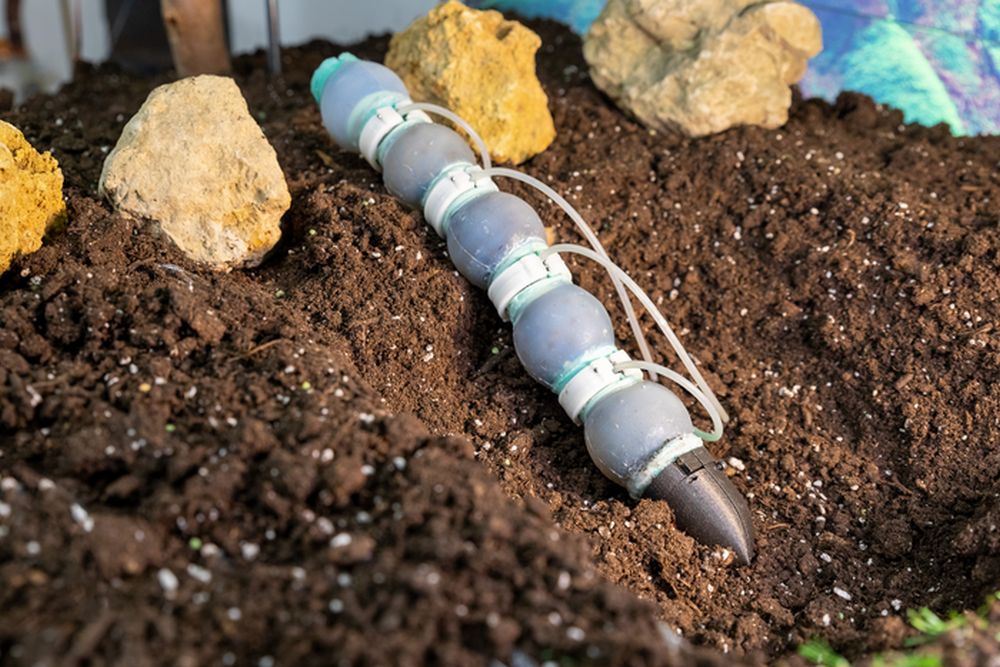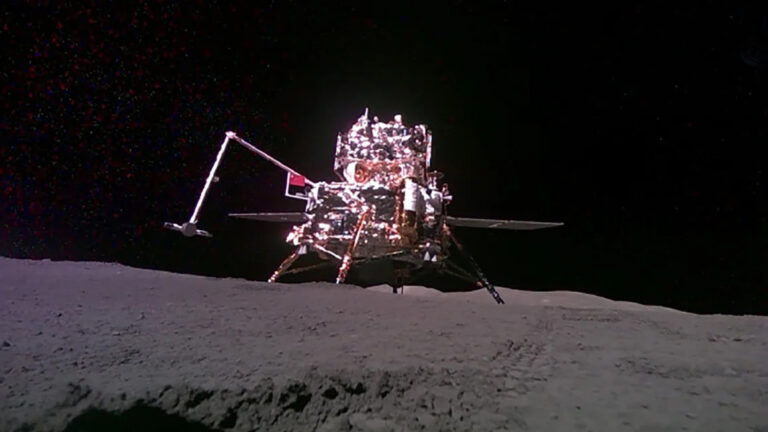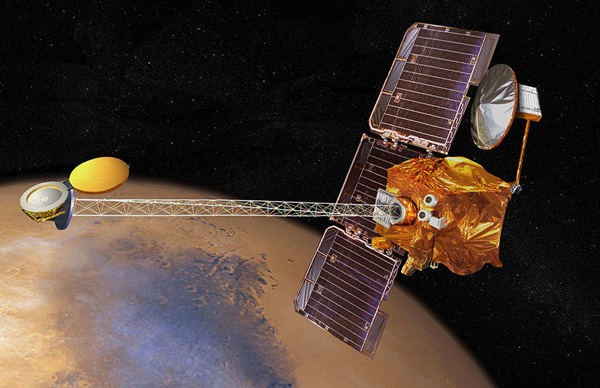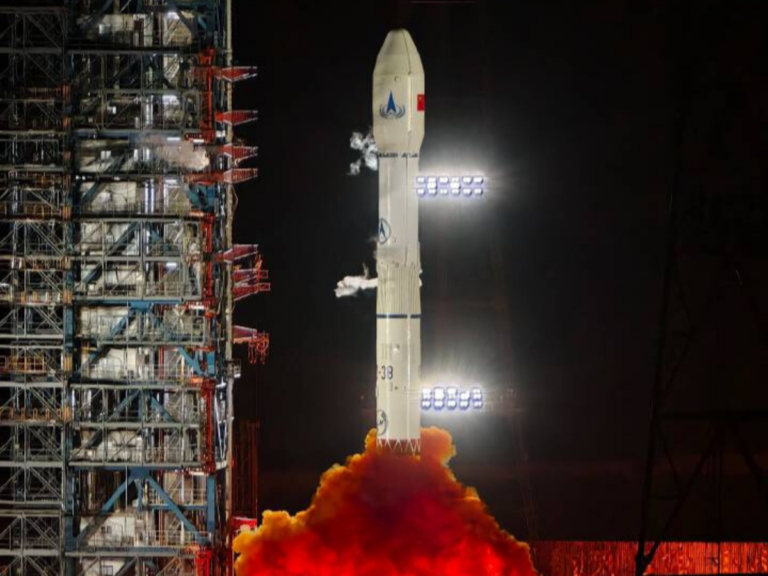
When designing robots for space exploration, engineers and developers often turn to nature for inspiration. From snakes to caterpillars to even fish, many different types of natural movements have been mimicked by the bodies of space robots. The latest of these so-called biomimetic robotic bodies comes from the Istituto Italiano di Tecnologia (IIT) in Genoa, Italy — and it was inspired by, of all animals, earthworms. Because earthworms have evolved to survive in a variety of different soil types, frequently wriggling into confined spaces, their bodies could be perfect for exploring foreign planets.
“This robot can be a stepping stone as to why the bio-inspired approach is relevant in developing better robots to serve the purpose and for sure inspire the development of other robots,” Riddhi Das, a postdoctoral researcher at IIT and the first author on the earthworm paper in Nature Scientific Reports, tells Astronomy. “Our bio-inspired approach shows that careful understanding of the internal biomechanics helps in understanding the real organism and development of a robot which functions similar to it.”
Soft versus hard robots
The earthworm robot falls into the field of “soft robotics,” where engineers and developers design robots with soft and flexible bodies, usually comprised of silicone or rubber.
“Soft robotics is a good fit for several tasks terrestrially, particularly for handling delicate or flexible items,” says Meera Day Towler, a Senior Research Engineer at the Southwest Research Institute who studies soft robotics. “This includes tasks such as farming and food handling. These same types of tasks are useful in space to help support operations on board a space station.”
Soft robots are valuable because they can stretch or twist their flexible frames to fit into or navigate through smaller spaces. In the case of Das’ earthworm robots, they could even burrow into the soil to avoid the harsh surface conditions found on nearby worlds. However, while these robots offer some unique advantages, they also have their limitations. Towler added that these machines are “not inherently well suited to the vacuum of space.” This challenge forces scientists like Das to work on body designs that make soft robots more vacuum resistant, and therefore more versatile for deployment.
Unlike soft robotics, “hard robotics,” focuses on more structured robotic body designs made of rigid materials like plastics or metals, such as planetary rovers. From robotic arms to wheels, these “hard robots” may be designed to carry heavy loads of planetary material, such as rock samples, or be prepared to move over rocky or uneven terrain.
According to Martin Azkarate, a Robot Navigation System Engineer for the European Space Agency (ESA): “The locomotion subsystem of an exploration rover will always depend on the target exploration terrain. For example, we have only seen wheeled rovers on Mars because this is the most efficient locomotion mode to traverse the vast terrains on Mars. But, for example, when exploring a lunar crater or lunar skylights, other locomotion types could be envisaged (walking, jumping, or snake-like robots).”
In other words, although hard robots clearly have specific strengths, such as being able to withstand extreme environments and carry heavy loads, they lack the flexibility of soft robots.
Understanding earthworm robots
While space organizations like NASA, the ESA, and even private space companies like SpaceX utilize soft and hard robots, Das and his team at IIT believed that the key to making their earthworm robot suitable for space exploration was in its movement.
“I tried to understand the importance of some of the anatomical features of the earthworm, their role in generating subsurface locomotion, and designed a peristaltic soft robot taking inspiration from it,” Das says. “The idea came about from the lack of real burrowing robots available to date.”
Peristalsis is a type of squeezing movement that muscles make to propel forward. This motion is found in the esophagus when we eat, as the food moves to our stomach from our mouths via peristalsis.
Das and his team could preserve this movement in their robot by using a bellows-type system, the Peristaltic Soft Actuator (PSA), within each segment. “The space between the central part and the skin is filled with fluid of a constant volume,” explains Das. This constant volume of fluid can make the earthworm robot more vacuum resistant and robust to changes in pressure.
“When air is passed into the PSA, the central part elongates, making the whole module long and thin,” he adds. “This is the exact shape of the earthworm segment when the circular muscles contract. Similarly, when air is drawn out of the PSA, the central part compresses, making the whole PSA module short and thick. This shape change is similar to the earthworm segment when the longitudinal muscles contract.”
So, just like earthworms propel themselves by stretching and compressing each segment in their bodies, an earthworm robot could also leverage this type of movement to move itself forward through a range of different materials.
The problems with burrowing
At about 1.5 feet (45 centimeters) long, the prototype earthworm robot has five PSA segments covered with tiny bristles called setae, also found in living earthworms. While these bristles and peristaltic motion already make Das’ robot unique compared to other soft space robots, the earthworm robot can also burrow.
“Planetary excavation is a critical application of all burrowing peristaltic robots,” says Das. With burrowing, the robot can not only avoid extreme environments, but also collect planetary soil samples for later study. However, successfully burrowing is often difficult for a soft robot, especially when they have to displace heavy soil.
Despite the current model of their earthworm robot still struggling to move through coarse soil, Das and his team are excited to see what sorts of improvements can be made to the system. “Once we get substantial knowledge about its capabilities,” he says, “we can implement it for space exploration missions.”









